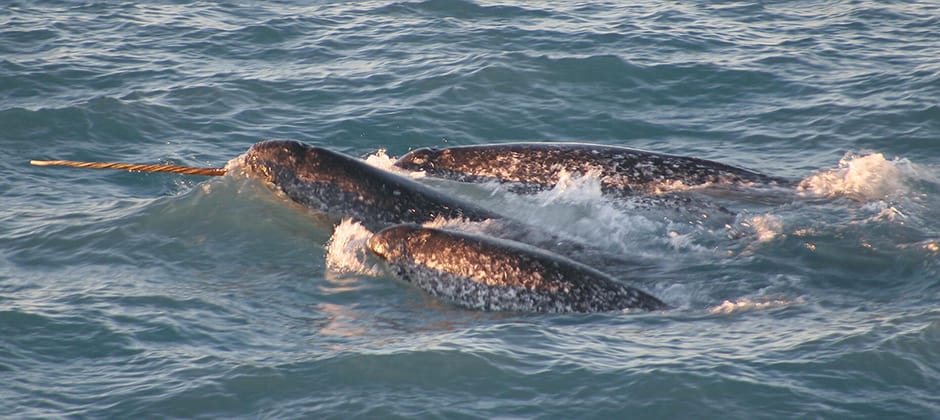Share this article
Narwhals increasingly exposed to mercury
Narwhal tusks can tell researchers a lot about the marine mammals’ feeding habits and exposure to dangerous chemicals.
“They’re kind of like tree rings,” said Jean-Pierre Desforges, a postdoctoral research fellow at McGill University. “As the tree grows — and the same for narwhal tusks — they add another layer every year incrementally.”
The tusks’ substrate preserves information for every year of life. That includes any exposure to mercury they have had and where they have eaten on the food chain. Desforges and his colleagues wanted to use these windows into the lives of narwhals (Monodon monoceros) to determine their mercury exposure and the effects of climate change on them over the years.
“Climate change and mercury are considered two of the major threats for Arctic species,” said Desforges, who led a study on the topic published in Current Biology. As apex predators, narwhals face a particular threat from ingesting mercury through their diet of smaller prey containing mercury. The chemical can affect the species’ reproduction and immune health. The team also knew that climate change can also impact narwhals, as melting sea ice alters their available food sources and habitat choices and makes them more vulnerable to larger predators, such as killer whales (Orcinus orca) taking advantage of the ice-free waters.
Since narwhals can live longer than 50 years, Desforges’s team was able to determine how their diets and mercury exposure changed from the 1960s to the 2000s. “Their tusks provide this unique archive of valuable ecological data,” he said.
The team found that narwhal diets seemed to change according to Arctic sea ice coverage. From the 1960s to around 1990, when there was a lot of sea ice, the mammals focused on prey associated with the ice and higher on the food chain, including Greenland halibut (Reinhardtius hippoglossoides) and Arctic cod (Boreogadus saida). During the same period, narwhals had high mercury levels because some of those fish contain lots of mercury.
As sea ice began to decline in the 1990s, narwhal diets switched to fish species associated with more open waters, such as capelin (Mallotus villosus) and polar cod (Boreogadus saida). Since those species contain less mercury, the researchers would have expected narwhals’ mercury levels to go down, but that’s not what happened. “After the year 2000, mercury levels started to rise and rose faster than they had in the previous four decades,” Desforges said.
The reason, researchers believe, is more mercury entering the food web, perhaps due to Southeast Asian coal combustion or gold mining taking place around the world, or as a result of old mercury deposits entering the system because of climate warming.
“We can’t stop old mercury from cycling around the ecosystem,” Desforges said. “It’s a challenging thing to do anything about.”
With the Minamata Convention on Mercury, an international effort to reduce mercury emissions, new releases of mercury may begin to decline. “Studies like ours can support those initiatives by showing how mercury changes through of mercury through time and highlighting that certain species are at high risk of potential health effects” he said.
Header Image: Narwhals’ distinctive tusks offer a glimpse into their past diet. Credit: Dr. Kristin Laidre








